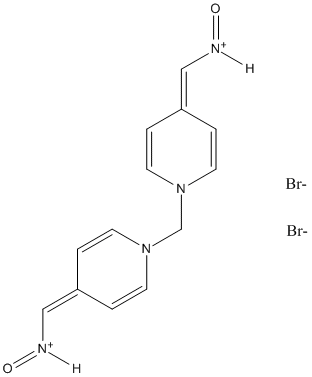MMB-4
General
Type : Oxime, Bisoxime, Bispyridinium
Chemical_Nomenclature : 1,1'-methylene bis[4-[(hydroxyimino)methyl] pyridinium]dibromide
Canonical SMILES : C1=CN(C=CC1=C[NH+]=O)CN2C=CC(=C[NH+]=O)C=C2.[Br-].[Br-]
InChI : InChI=1S\/C13H12N4O2.2BrH\/c18-14-9-12-1-5-16(6-2-12)11-17-7-3-13(4-8-17)10-15-19\;\;\/h1-10H,11H2\;2*1H
InChIKey : ZKQNRRLCBJUEBC-UHFFFAOYSA-N
Other name(s) : Methoxime, MMB4, oxo-[[1-[[4-(oxoazaniumylmethylidene)pyridin-1-yl]methyl]pyridin-4-ylidene]methyl]azanium\;dibromide, N,N'-monomethylenebis(pyridiniumaldoxime), CHEMBL451825, MMB4 DMS
MW : 418.08
Formula : C13H14Br2N4O2
CAS_number :
CID PubChem :
InChIKey UniChem :
Iuphar :
Wikipedia :

References
No reference